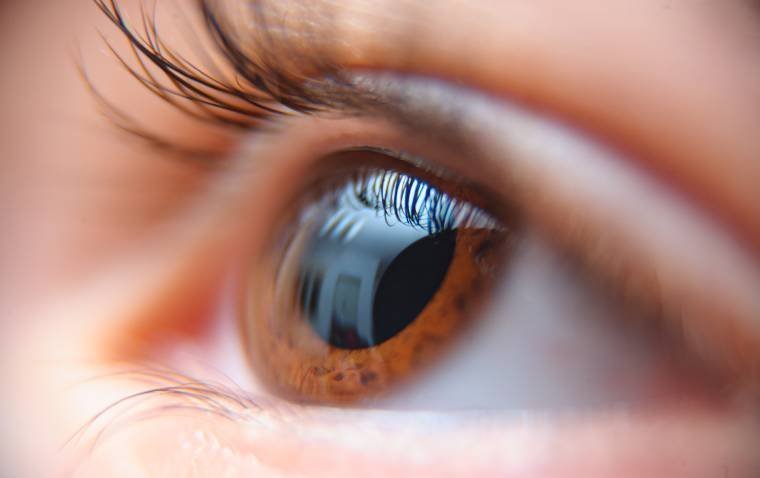
Magic Mushrooms May Induce Long-Lasting Improvement in Color Blindness
Researchers at the Department of Psychiatry and Psychology, Center for Behavioral Health, Neurological Institute at the Cleveland Clinic in Ohio have authored a case report on the potential positive effects of psilocybin on color blindness.
The report, published in the journal Drug Science, Policy and Law, cites a self-study by a colleague reporting vision improvement and highlights previous reports that suggest a need for a better understanding of how these psychedelics can be utilized in therapeutic settings. The researchers urge further exploration into the implications of this finding.
Lysergic acid diethylamide (LSD) or psilocybin (magic mushrooms) have been reported to improve color vision in individuals with color vision deficiency (CVD), commonly known as color blindness. However, there is a lack of scientific evidence to support these claims due to the restricted research on the effects of these drugs.
What Is Color Blindness?
Color vision relies on three types of photoreceptors, known as cones, which sense red, green, and blue wavelengths of light through light-sensitive pigments. The absence of one or more of these pigments causes color blindness. Red-green CVD, the most common type of CVD, results in difficulty distinguishing between red and green, typically caused by X chromosome-linked recessive mutations in genes that code for cone components. This condition occurs in 8% of men and 0.5% of women.
People with color blindness can perceive only around 10% of the hues and color variations that those with normal color vision can see. Some forms of color blindness cause the inability to distinguish between red and green, making life challenging for people with this condition. It can lead to mistakes in choosing colors while dressing, make it difficult to read maps and infographics, and hinder the ability to assess the ripeness of fruits or freshness of meat in the fridge. Color blindness can also restrict career options in professions such as airline pilot, graphic artist, and jobs related to textiles and paint, where color vision is essential.
There is currently no cure for color blindness, but there are some attempted solutions. One option for certain types of color blindness is to use glasses with special lenses, such as those produced by EnChroma. These lenses selectively filter out light wavelengths where red and green frequencies overlap, creating a distinct separation for those with color blindness.
Self-Administered Ishihara Test & Results
In a recent study, a person with mild red-green color vision deficiency (deuteranomalia) conducted a self-administered Ishihara Test to measure the degree and duration of color vision improvement after taking 5 grams of dried psilocybin magic mushrooms. According to the subject's self-reported Ishihara Test results, there was a partial improvement in color vision, reaching its peak at 8 days and persisting for at least 16 days after taking psilocybin. This research highlights the need to further understand the potential therapeutic use of psychedelics for treating color blindness.

Score on Ishihara test questions 1–21 following psilocybin self-administration. All scores are self-reported, except for the final administration at 436 days post-administration. Credit: Drug Science, Policy and Law (2023). DOI: 10.1177/20503245231172536
The subject of the study had previous experiences with psychedelics, including using MDMA once, psilocybin mushrooms twice, oral LSD five times, and inhaling DMT seven times. After these episodes, the subject noted sustained improvement in color vision for several months.
Before taking the psilocybin mushrooms, the subject administered the Ishihara Test to themselves. The test comprises a series of graphics made up of a mosaic of colored dots of varying size and hue. The cards of the test are designed to conceal images from someone with color blindness that would be apparent to someone with normal color vision. For example, a graphic of red and green dots might have the number "3" composed of only red dots, which would be visible to most people but not to someone with color blindness.
In the initial Ishihara Test, the subject scored 14 on plates 1-21, indicating mild red-green blindness. Additionally, a set of four cards indicated deuteranomalia, a form of CVD where greens look more like reds.
After taking psilocybin, the subject reported an intensification of colors but only showed slight improvement in the Ishihara Test score, reaching 15 at 12 hours post-administration. However, by 24 hours post-administration, the score had increased to 18, just above the cut-off of 17 required for normal color vision. The score peaked at 19 on day eight and remained in the normal range four months later.
The researchers propose that the visual effects induced by psychedelics are more likely a result of changes in brain activity rather than direct effects on the eye's retina or peripheral vision. The time delay observed between psilocybin consumption and color vision improvement indicates that the mushroom may have initiated a learning process concerning color interpretation, possibly affecting the connectivity between different visual regions of the brain.
The authors note that although color blindness is usually caused by a genetic defect, if a single use of psilocybin can result in lasting partial improvements in color vision, it suggests that psilocybin could potentially induce permanent changes in visual processing in some individuals. The authors recommend that future studies investigate whether psilocybin can produce similar improvements in more severe cases of color blindness, examine the relationship between psilocybin dosage and improvement, and uncover the underlying mechanism of this intriguing effect.
Reference
Brian S. Barnett et al, Case report: Prolonged amelioration of mild red-green color vision deficiency following psilocybin mushroom use, Drug Science, Policy and Law (2023). DOI: 10.1177/20503245231172536
(1).jpg)










